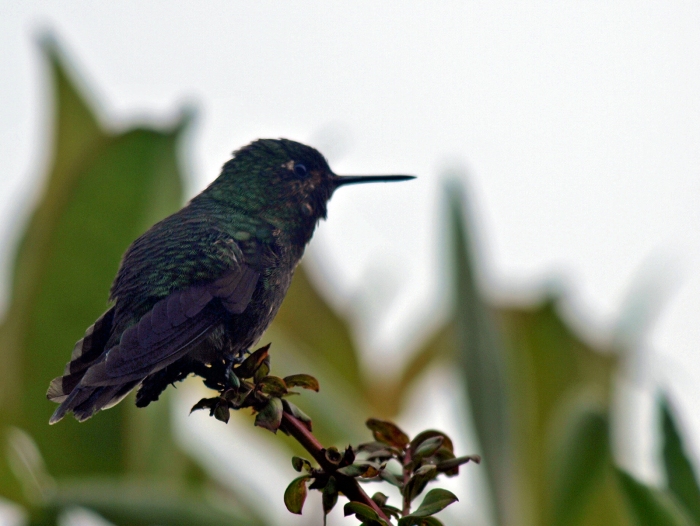Return of Bird of the Week: Long-tailed Sylph
A reader has pointed out that the Bird of the Week feature has had almost exclusively hummingbirds for a half a year now. It’s a fair point. WC is far from exhausting his collection of hummingbird photos, but there are dozens of other families of birds. So WC will change tracks starting next week. But let’s end the hummingbird series with a bang: here’s a Long-tailed Sylph.

Long-tailed Sylph, Ecuador
It’s a difficult bird to photograph. A photographer is forced to a vertical composition, and the famous “Rule of Thirds” has to be thrown out at the start. And no matter what the photographer does, there’s that huge, empty space to the side of the tail. But, you may agree, the bird is worth the effort. That tail – present just in the male – is much longer than the bird itself. It’s pretty spectacular, even with this poor quality photo, taken back in 2009 with an Olympus E-3.

Long-tailed Sylph, Ecuador
And the male’s head is nearly as spectacular as that tail, with an iridescent aqua forehead and a dark blue throat. This Sylph is as strongly sexually dimorphic as any humming bird WC has seen.

Long-tailed Sylph Female, Ecuador
Even badly back-lit, you can see the female’s tail is barely longer than her wings, and her coloration is drab. Yet she is the one who chooses a mate, and must think amazingly long tails make for a better mate. Sexual selection is a strange process.
The Long-tailed Sylph has a remarkable range, too, extending from the north Venezuelan lowlands down along the Andes to Bolivia. In Ecuador, where these birds were photographed, it on both slops of the Andes between 900 and 3,000 meters. There’s some evidence it migrates downslope in the rainy season. They are found in scrubland and clearings, gardens, occasionally grassland and edges of humid forest and second-growth woodland, but rarely in forest interior. That extensive range and generalist habitat preference makes it a species of Least Concern.
WC rarely includes photos of birds on feeders, but the Long-tailed Sylph is an enthusiastic – if highly territorial – feeder user, and as it happens this photo shows the color of this bird best.

Long-tailed Sylph, Ecuador
WC needs to get back to Ecuador and get better photos of this and a dozen other species…
For more bird photographs, please visit Frozen Feather Images.
Just an extraordinarily beautiful hummer… thank you.